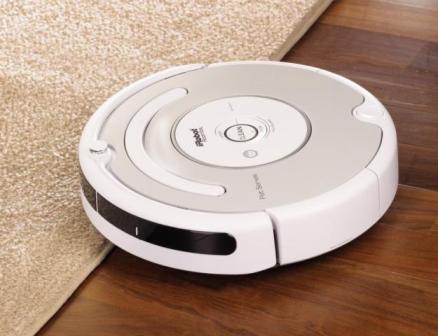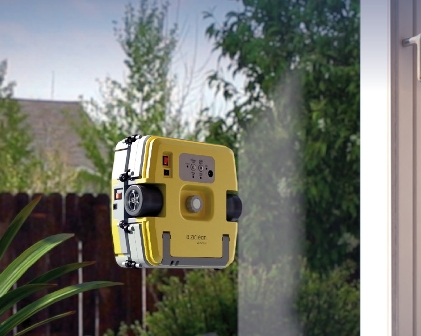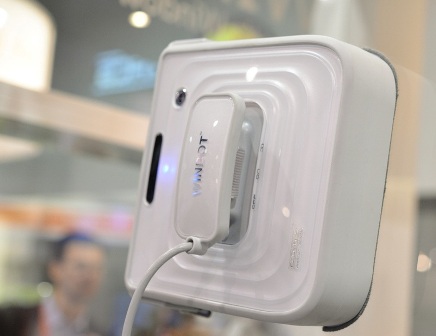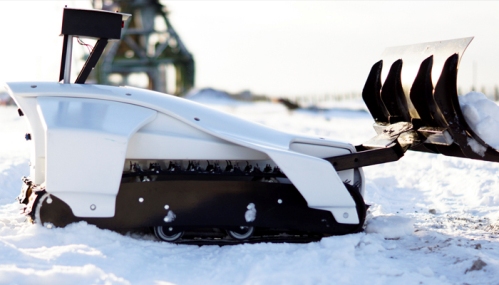Categories: Electrical Reviews
Number of views: 16864
Comments on the article: 0
Household robots - an overview of robots for various purposes
 Today, robotics is conquering ever-larger industries and is increasingly being introduced into various areas of human life. And if earlier robots could fulfill the role of man, replacing him in factories, which often require uniform actions in the conveyor production, for example, in the manufacture of automobiles, now the time has come when robots are able to be in every house to help people solve urgent tasks, and help save our time and effort.
Today, robotics is conquering ever-larger industries and is increasingly being introduced into various areas of human life. And if earlier robots could fulfill the role of man, replacing him in factories, which often require uniform actions in the conveyor production, for example, in the manufacture of automobiles, now the time has come when robots are able to be in every house to help people solve urgent tasks, and help save our time and effort.
Household robots designed to help a person in his daily life are gaining more and more popularity, which is not at all surprising, because the variety of robots is growing every year. Already today it includes vacuum cleaners, lawn mowers, window washers, pool cleaners, and even snow-removing robots.
By the way, back in 2007, Bill Gates drew attention to the significant potential of this technological area by publishing the article “A Robot in Every House,” where he reflected the prospects that would open to society through the introduction of household robots.
The subject of this article will be a brief overview of the growing types of household robots. We will consider several robots designed for various domestic applications, see how they work, what they can, how to use them, and how easy it is to handle them.
Vacuum cleaner robot

Since the robot vacuum cleaner is a stand-alone device, it is necessarily equipped not only with a battery, but also with a camera that helps it navigate in the room so that it does not clean the same place twice.
The robot simply preliminarily builds the optimal cleaning map, relying on the data from the camera, then proceeds directly to the cleaning, after which it returns to the starting point associated with the charger.
On board the vacuum cleaner there are all the necessary sensors (including a gyroscope) that allow the device to measure the distance to the obstacle, assess the height of the furniture base above the floor (whether it can move under it), detect a collision, determine if a dust box is in place, etc. Intelligent electronics allow the robot to navigate normally among furniture and walls during operation.
The dust collector is compact, and is located near the brushes. For movement, the robot uses two wheels with which it can turn. Two guide brushes sweep the debris in the direction of the turbo brush, which in turn directs the debris to the dust collector, where the suction device finally captures the debris. All this equipment is powered by lithium ion battery capacity of several ampere hours.
Thanks to the presence of a gyroscope, the robot vacuum cleaner always “knows” the angle of its inclination, and therefore the likelihood that it gets stuck is eliminated. The only drawback of such robotic vacuum cleaners is the low suction power. They are suitable for cleaning smooth floor coverings such as linoleum or laminate, but they are unlikely to cope with the cleaning of heavily soiled carpets.
In any case, the robot vacuum cleaner can greatly facilitate our lives. A person will no longer have to, every time he sees dust on the floor, run after a broom to sweep. It is enough to program the robot for regular cleaning, and it will independently carry out preventive maintenance throughout the apartment, at home or even in the office.
Window washer

There are two types of window cleaning robots. The first type is a two-part robot, in one of which is the control electronics, and in the other - a cleaning mechanism. Two parts are attached to the window glass from different sides, and are held on it by permanent magnets.
First, the robot sets itself a card for work, having previously reached each of the edges of the glass, thus measuring the size of the surface to be washed, then begins to wash it, moving in a zigzag pattern.
Four microfiber pads serve as washing tools, and movement is achieved through the interaction of permanent magnets and a control module.
In the center between the pads is a hole from which detergent is supplied. The device is powered by a built-in lithium battery. It’s enough for a person to start the device, and he will do everything himself, using a detergent pre-charged in a special tank.

The second type of window cleaning robot is a robot with vacuum suction cups. Such a robot has only one and only a working module for one side of the window.
The robot essentially wipes the glass, moving left and right along its surface, without the use of rotating pads. It uses a replacement cloth, which must first be moistened with detergent manually.
The robot is powered from the network, although it does the work autonomously, it is worth turning it on and installing it on the glass. There is a backup battery in case of a power outage in the house. The user is left to install the robot on the glass and turn it on.
Robotic lawn mower

The principle of operation of these robots is as follows. The first step is to lay a cable-limiter, through which direct current flows, and which defines the boundary of the working area of the robotic lawnmower. Such an autonomous lawn mower is equipped with all the necessary sensors, including obstacle sensors, like robotic vacuum cleaners, so that the lawn mower could go around a tree, a curb or a flower bed.
The limiter cable is necessary so that the mower does not fall into the pond or try to mow the stones of the garden path, thereby harming itself. The cable is enclosed by the perimeter, flowerbeds, stone walkways, ponds.
During operation, the lawn mower randomly moves across the area within the perimeter, cutting off grass with knives. Some models do not move randomly, but in a spiral or zigzag, it depends on the manufacturer.
The parameters of robotic lawnmowers are different. First of all, by the width of the grip. Agree, with a working width of 56 cm, compared to 24 cm, things will go and will be completed faster. Power also matters.
A lawn mower with a power of 500 watts and a working width of 56 cm will go much faster than the same area as a 100 watt model. The battery here, of course, determines the area that the robot can serve on a single charge. There are robotic lawn mowers designed for 4 acres, and there are all 30 acres.
Does the kit have a base for recharging so that the mower can drive on its own, recharge and continue working? The consumer needs to pay attention to this when choosing a model, otherwise they will have to carry the robot on recharge on their own, which is not always convenient.
If there is a charging base station, then a person will be able to program the lawnmower for the whole season and not worry about the schedule for the mowing of the lawn.
Pool Cleaning Robot

The robot has a power cord and a pair of wheels to move along the bottom and walls of the pool. Depending on the length of the wire, the size of the pool, which the robot can handle, is normalized. The robot brushes rotate independently of the wheels, and easily remove mucus and dirt, directing it through the filter.
Water along with dirt is sucked into the filter compartment of the robot, then water is discharged back into the pool, and the dirt settles on the filter. Then you just need to remove the filter and rinse it under water.
The pool cleaning robot first cleans the bottom, then moves along the walls, sticking to them. So, 70% of the time is spent on cleaning the bottom, and 30% - on cleaning the walls of the pool. Typical bottom pool of 28 sq.m. the average robot will clean in 2-3 hours.
Despite the fact that water passes through the filter of the robot, sucked up by the pump, the pool owner will need to use the pool water purification system as always, the robot will not replace it with itself, it will only clean the surfaces, but not the water itself. Nevertheless, the robot will save its owner not only from the need to clean the pool manually, but also from the need to observe the cleaning process.
Snow blower

Finally, the snow blower is the most relevant solution for our latitudes. Instead of swinging a shovel where a large snowplow cannot drive, a snowblowing robot will help. The robot is controlled from a smartphone via wi-fi, and it looks like an interactive game.
Raising and lowering the bucket, moving back and forth on the tracks, turning around - all this can be done by a robot, which the operator controls remotely, even while at home in the heat at the computer.
The eyes of the robot is a video camera through which the user can assess the situation, then to direct the robot to perform snow removal.
A capacious battery, charged from the outlet, will allow snow removal for several hours without having to carry snow manually, especially when it comes to cleaning large areas, near buildings where snow removal equipment simply cannot get through.
As you can see, the assortment of household robots today is quite wide, and everyone will probably find among the available on the market today what will make life easier for him. Someone needs to regularly clean the summer infinity pool, and someone is tortured to clean snow in the winter.
Everyone who has animals in the house will think about purchasing a robot vacuum cleaner, some of which get along well with animals. You live in an area with heavily polluted air and windows often become dusty - the robot will help you wash the windows. What can we say about the robotic lawnmower, which will allow its owner to do other more important things or just relax while the robot is engaged in the lawn.
See also at bgv.electricianexp.com
:
